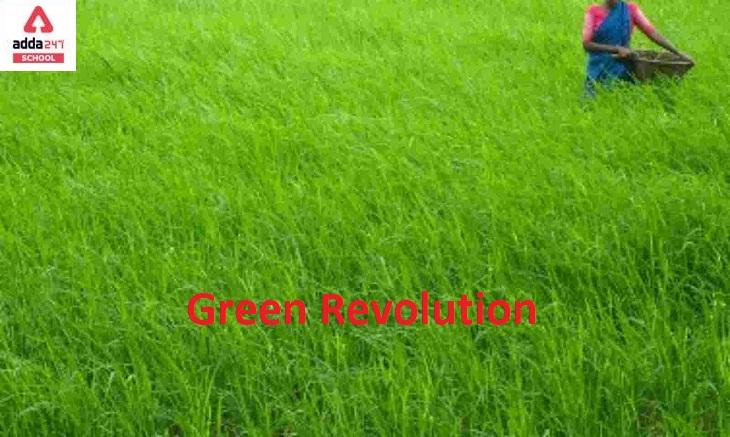Perpetual Green Revolution
The concept of a “Perpetual Green Revolution” refers to a sustained and ongoing process of agricultural innovation and improvement, similar to the original Green Revolution but with a focus on long-term sustainability and environmental considerations. The Green Revolution, which began in the mid-20th century, involved the development and dissemination of high-yielding crop varieties, increased use of fertilizers and pesticides, and improved agricultural practices to significantly boost food production, particularly in developing countries.
However, the Green Revolution was often criticized for its environmental and social consequences, including soil degradation, water pollution, loss of biodiversity, and increased social inequality. The idea of a Perpetual Green Revolution aims to address these concerns by promoting a more sustainable and balanced approach to agricultural development. Some key components of a Perpetual Green Revolution might include:
- Sustainable Farming Practices: Emphasis on sustainable and regenerative agriculture practices, such as crop rotation, organic farming, and agroecology, which promote soil health, reduce the need for chemical inputs, and minimize environmental impact.
- Biodiversity Conservation: Promoting the conservation of biodiversity and the use of crop varieties and livestock breeds adapted to local conditions, reducing reliance on a few high-yielding varieties.
- Efficient Resource Use: Optimizing the use of water, energy, and other resources in agriculture to reduce waste and minimize the environmental footprint.
- Climate Resilience: Developing and adopting climate-resilient crop varieties and farming systems to cope with the challenges of climate change.
- Inclusive and Equitable Development: Ensuring that the benefits of agricultural innovation are distributed equitably, with a focus on smallholder farmers and marginalized communities.
- Reduced Waste: Strategies to reduce post-harvest losses and food waste, which can contribute to food security.
- Technological Advancements: Leveraging modern technologies, such as precision agriculture and data analytics, to improve resource management and enhance agricultural productivity.
The Perpetual Green Revolution concept recognizes that agricultural systems need to evolve continuously to meet the world’s growing food demands while also protecting the environment and addressing social equity issues. It emphasizes the need for ongoing innovation and adaptation to achieve sustainable and resilient food systems.
Green Revolution
In India, the Green Revolution transformed agriculture into an industrial system. But how was this accomplished? It was accomplished by utilising modern methods and technology, such as high yielding variety (HYV) seeds, tractors, irrigation systems, herbicides, and fertilisers. In India, agricultural scientist M. S. Swaminathan was largely responsible for the Green Revolution. Do you, on the other hand, know who started the Green Revolution as a whole? Norman E Borlaug started it, and it used agricultural science and technology to boost agricultural output in poor countries.
Read More: Natural Resources
Green Revolution is Related to
The main contribution of the Green Revolution was the development of higher-yielding wheat cultivars. The goal of introducing these higher-yielding wheat types was to establish rust-resistant wheat strains. The introduction of high-yielding varieties (HYV) of seeds, higher fertiliser quality, and enhanced irrigation techniques all contributed to an increase in yield production. As a result of the outcomes, the country became self-sufficient in food grains, enhancing India’s agricultural standing. The Green Revolution’s methods, which included the adoption of high-yielding varieties (HYVs) of seeds combined with modern farming technologies and a dramatic increase in wheat production, fueled India’s self-sufficiency and boosted farmer excitement.
Other green revolution practises included the use of high-yielding varieties (HYVs) of seeds, irrigation infrastructure, pesticides, insecticides, and herbicides, consolidation of holdings, land reforms, improved rural infrastructure, agricultural credit, chemical or synthetic fertilisers, sprinkler or drip irrigation systems, and advanced machinery.
However, the green revolution had its own negative consequences, with claims that the increased use of chemical pesticides and fertilisers had a severe impact on the soil and land, resulting in land degradation.
ग्रीन रिवॉल्यूशन- Green Revolution in Hindi
हरित क्रांति अनुसंधान, विकास और प्रौद्योगिकी हस्तांतरण पहल की एक श्रृंखला को संदर्भित करती है जो 20 वीं शताब्दी के मध्य में शुरू हुई और दुनिया भर में, विशेष रूप से विकासशील देशों में कृषि उत्पादन में उल्लेखनीय वृद्धि हुई। इसकी विशेषता उच्च उपज वाली फसल किस्मों की शुरूआत, उर्वरकों और कीटनाशकों के बढ़ते उपयोग और बेहतर कृषि पद्धतियां हैं। हरित क्रांति को भोजन की कमी और अकाल को रोककर लाखों लोगों की जान बचाने का श्रेय दिया जाता है।
हरित क्रांति के प्रमुख घटकों और विकासों में शामिल हैं:
अधिक उपज देने वाली फसल की किस्में: उच्च उपज क्षमता वाली नई फसल किस्मों का विकास, अक्सर क्रॉसब्रीडिंग या आनुवंशिक संशोधन के माध्यम से। उल्लेखनीय उदाहरणों में उच्च उपज देने वाली गेहूं और चावल की किस्में शामिल हैं।
उर्वरकों और कीटनाशकों का बढ़ता उपयोग: किसानों ने फसल की पैदावार बढ़ाने और कीटों और बीमारियों से बचाव के लिए रासायनिक उर्वरकों और कीटनाशकों का उपयोग करना शुरू कर दिया।
सिंचाई और जल प्रबंधन: बेहतर सिंचाई तकनीकों, जैसे ट्यूबवेल और बांधों के उपयोग ने फसलों के लिए लगातार पानी की आपूर्ति सुनिश्चित करने में मदद की।
मशीनीकरण: फसलों के रोपण, कटाई और प्रसंस्करण में दक्षता बढ़ाने के लिए आधुनिक कृषि उपकरणों और प्रथाओं को अपनाना।
कृषि विस्तार सेवाएँ: सरकारी कार्यक्रमों, कृषि विश्वविद्यालयों और अनुसंधान संस्थानों के माध्यम से किसानों तक ज्ञान और प्रौद्योगिकी का प्रसार।
सहायक नीतियां: कई देशों में सरकारों ने सब्सिडी, मूल्य गारंटी और अनुसंधान निधि के माध्यम से हरित क्रांति के लिए सहायता प्रदान की।
हरित क्रांति के कई सकारात्मक प्रभाव पड़े, जिनमें शामिल हैं:
खाद्य उत्पादन में वृद्धि: फसल की पैदावार और समग्र कृषि उत्पादकता में वृद्धि हुई, जिससे भोजन की कमी को दूर करने और अकाल के जोखिम को कम करने में मदद मिली।
गरीबी में कमी: उच्च फसल पैदावार अक्सर किसानों की आय में वृद्धि में तब्दील हो जाती है, जिससे ग्रामीण क्षेत्रों में गरीबी में कमी आती है।
बेहतर पोषण: अधिक भोजन की उपलब्धता, विशेष रूप से गेहूं और चावल जैसी मुख्य फसलों ने कई लोगों के पोषण में सुधार किया है।
हालाँकि, इसके कुछ नकारात्मक परिणाम भी हुए:
पर्यावरण संबंधी चिंताएँ: रासायनिक उर्वरकों और कीटनाशकों के भारी उपयोग ने पर्यावरणीय मुद्दों को बढ़ा दिया है, जिनमें मिट्टी का क्षरण, जल प्रदूषण और गैर-लक्षित जीवों को नुकसान शामिल है।
आय असमानता: हरित क्रांति के लाभ समान रूप से वितरित नहीं किए गए, जिससे ग्रामीण क्षेत्रों में आय असमानता पैदा हुई।
आनुवंशिक समरूपीकरण: कुछ अधिक उपज देने वाली फसल किस्मों पर ध्यान केंद्रित करने से आनुवंशिक समरूपीकरण हुआ, जिससे फसलें बीमारियों और कीटों के प्रति अधिक संवेदनशील हो सकती हैं।
बाहरी आदानों पर निर्भरता: किसान सिंथेटिक उर्वरकों के उपयोग पर निर्भर हो गए, जो महंगा हो सकता है और दीर्घकालिक पर्यावरणीय प्रभाव डाल सकता है।
हरित क्रांति ने कृषि को महत्वपूर्ण रूप से बदल दिया और दुनिया के कई हिस्सों में खाद्य सुरक्षा और आर्थिक विकास में महत्वपूर्ण भूमिका निभाई। यह बहस और शोध का विषय बना हुआ है क्योंकि समाज स्थिरता और पर्यावरणीय चिंताओं के साथ खाद्य उत्पादन में वृद्धि की आवश्यकता को संतुलित करने का प्रयास करता है।
Read: Capital of Uttar Pradesh
Green Revolution Father: MS Swaminathan
Mankombu Sambasivan Swaminathan is MS Swaminathan’s full name, and he is known in India as the “Father of the Green Revolution.” MS Swaminathan, an Indian agricultural scientist, plant geneticist, administrator, and humanitarian, was born on August 7, 1925. He is also a global leader of the green revolution. He has been called the “genius” behind India’s green revolution. MS Swaminathan’s collaborative scientific efforts with Norman Borlaug helped save India and Pakistan from famine-like conditions in the 1960s, and his leadership as Director-General of the International Rice Research Institute (IRRI) in the Philippines helped him win the first World Food Prize in 1987. This medal is considered one of the finest honours in agriculture. He has been dubbed “the Father of Economic Ecology” by the United Nations Environment Programme.
In 2004, Swaminathan served as the chairman of the National Commission on Farmers (NCF). This commission had proposed far-reaching changes to India’s agricultural sector. MS Swaminathan is also the founder of an eponymous research foundation, and he introduced the term “Evergreen Revolution” in 1990 to characterise his goal of “perpetual productivity without concomitant environmental impact.” He was elected to the Indian Parliament for one term between 2007 and 2013, and during that time he introduced a measure to recognise women farmers in India. It did, however, lapsed.
Read: Fundamental Rights
Green Revolution was introduced in India in 1990
The green revolution can be defined as a revolution that led in a significant rise in food grain output (especially wheat and rice). Beginning in the mid-twentieth century, new, high-yielding varieties were introduced into developing countries, resulting in the green revolution. Farmers in Mexico and the Indian subcontinent were essential witnesses to its early accomplishments, which were massive and dramatic. Furthermore, the new cultivars’ high yields necessitate significant amounts of chemical fertilisers and pesticides, raising concerns about cost and possible negative environmental effects, which poor farmers cannot pay. The older strains, on the other hand, were better adapted to local conditions and had some pest and disease resistance.









 NIOS 10th Result 2025 Out @results.nios....
NIOS 10th Result 2025 Out @results.nios....
 Mahatma Gandhi Central University CUET C...
Mahatma Gandhi Central University CUET C...
 CUET BBAU Cutoff 2025, Check Category Wi...
CUET BBAU Cutoff 2025, Check Category Wi...









